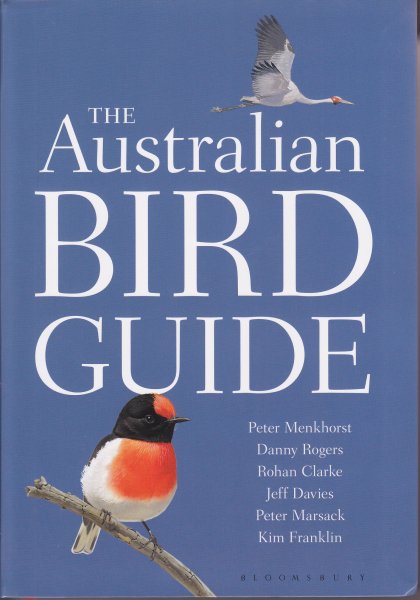
Publisher: Christopher Helm, London
Publication Year: 2017
Binding: 1
Page Count: 576
ISBN Number: 9781472912350
Price: £25.00
Australian Bird Guide
I was fortunate recently to visit Australia with my family. When a Brisbane-based friend heard we were coming over he advised me to wait before buying a new field guide, as this one was due to be published. This was excellent advice as the new ABG – nine years in the making - is a first-rate field guide, one of the best I’ve seen.
The ABG includes all extant species from Australia, including the offshore political dependencies (but not the Australian Antarctic Territory), totalling about 930 species and containing many recent taxonomic changes (following the IOC checklist). About 160 vagrants are covered in great detail which, although perhaps less valuable for a visiting Brit, will be welcomed by keen Australian birders. Inevitably, a substantial chunk of the book is dedicated to pelagic seabirds, crucial given the importance of this group in Australian waters.
There is an extensive introduction with some good notes on ‘Birding in Australia’, including tips on ‘ethical birding’; a well-balanced discussion on fieldcraft techniques such as playback in the modern era. There is also an interesting essay on the evolution and classification of Australian birds. The text is well-written and extensive and the artwork ranges from good to excellent. To be honest, I seldom referred to the identification notes in the text as the paintings were clear, realistic and helpfully annotated. The most useful text element for a visitor is actually the short section under ‘notes’ mentioning habitat and behaviour; indeed a little more along these lines would have been welcome.
Distribution maps are also important when visiting a county. To the extent I could assess it, these seemed mostly very good, a nice feature being differential shading to show subspecies. One minor issue that could be fixed is where, occasionally, two species are shown per map where they have small and non-overlapping ranges; these can be confusing when the map legend lists an eastern species before a western counterpart rather than vice versa (e.g. White-lined / Kimberley Honeyeater). The maps are clearly up to the minute (showing some recent discoveries of Night Parrot). The only time I found them wanting was when I found a Dusky Moorhen in Kakadu where it is not mapped as occurring, although online resources suggest this wasn’t an especially unusual find there.
Should you buy this book if you’ve already got an Australian field guide? Yes, I’d suggest it would be a shame not to. The only (inevitable) downside is its size; it’s a big beast of a book so if you’re planning to do long hikes then maybe go for a smaller guide (or maybe an app version might follow?) Otherwise, it’s worth the extra sweating! Highly recommended.
Book reviewed by Andy Musgrove





Share this page